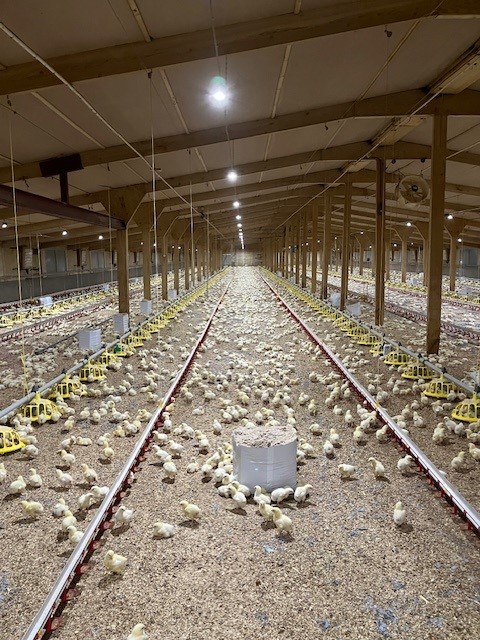Use the summer to practice humidity control before winter, writes Michael McCreesh, SenseHub Poultry
As we head into summer, the mean humidity should start to fall following on from a very wet winter and spring, meaning now is the time to get humidity control right to avoid problems in the autumn and winter when environmental humidity increases again.
Monitoring humidity closely to achieve that optimal balance can provide a more consistent, better flock performance and improved feed conversion ratio, by reducing health problems associated with poor humidity, while also potentially decreasing energy costs in the long run.
Controlling the conditions inside the poultry house is a balancing act that requires juggling heat, ventilation, and avoiding issues from either very high or very low moisture.
High humidity can lead to damp litter which is a major source of health problems in broiler systems. Moisture in the bedding can lead to an increase in pathogenic bacteria, causing a rise in diseases like footpad dermatitis.
To reduce these pathogens, it is important to know that temperature and humidity have an inverse relationship – when temperature goes up, humidity goes down and vice versa. As the temperature increases, the volume of the air expands increasing its ability to hold more moisture. Simultaneously this reduces the relative humidity even if the moisture content remains the same and hence the reason for the inverse relationship.
Relative humidity has an impact on the temperature we and our birds feel, known commonly as the apparent or feel temperature. So, if it is 30°c at 20% humidity, it would feel very different than at 30°c at 80% humidity, with the higher humidity making the apparent temperature feel much warmer for the same temperature set point.
SenseHub Poultry’s system can monitor temperature, ‘apparent’ temperature and humidity, giving a complete, holistic view of your birds’ environment and the possible impact on performance.
Chicks, for example, have specific requirements when it comes to humidity. Because they have a small body size and rapid respiration rate, they can become dehydrated very quickly even if the temperature is within normal range, especially if humidity levels are low (e.g. at 40% relative humidity or less).
This problem can be exacerbated when chicks move from the high humidity within the hatchers, commonly 80% humidity, to a low humidity shed, at around 40% humidity or less. This can shock the chicks and increase their risk of dehydration, alongside the potential to chill them, as the lower humidity means a lower apparent feel temperature, something which is particularly important with chicks from a young hatch.
To prevent this, target humidity should be 65% for the first three days after placement, then lowered to 60% until finishing, with a buffer of +/- 8% acceptable either side of target pending external environmental conditions etc.
Most producers that I have visited have upgraded to the more efficient and newer style indirect heating systems compared to the older direct heat gas fuelled set ups. These indirect heaters provide a source of very dry air with low relative humidity, which is great in keeping moisture down and helping litter conditions but with a downside of air being too dry at placement, with many struggling to get moisture above 40%.
These new systems have subsequently led to difficulties for some producers, making it hard to keep their humidity within the target parameters, and as a result, measures need to be taken to monitor this more actively.
Most ventilation systems are triggered by temperature and CO2, rather than humidity, which can make it harder to reduce the high moisture levels.
sensors can help maintain optimal humidity levels in poultry houses by providing real-time data on environmental conditions, enabling producers to adjust ventilation and heating before the negative effects are felt by the flock.


